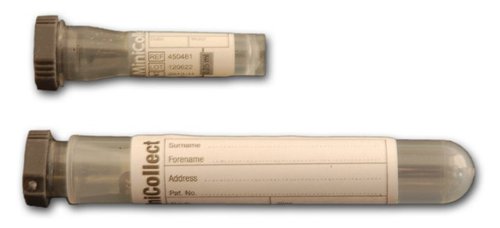Beta-hydroxybutyrate (BOHB) and Free Fatty Acids (FFA)
Chemical Pathology
Notes
Beta-hydroxybutyrate (BOHB, also known as 3- hydroxybutyrate) is a ketone body produced when glucose cannot be used as a fuel source. It is measured in conjunction with free fatty acids (FFA) and glucose in order to investigate hypoglycaemia or symptoms associated with ketoacidosis. The ratio of FFA to BOHB in hypoglycaemia can help to detect hyperinsulinism or a fatty oxidation defect.
BOHB can also be used to monitor patients who are on a ketogenic diet.
Sample requirements
- Always request with a concurrent lab plasma glucose.
- For investigation of hypoglycaemia samples should be taken during a hypoglycaemic episode and, if clinically safe to do so, before giving glucose.
For adults and children, blood taken into a 2mL fluoride-oxalate tube

For neonates, blood taken into a 0.25mL fluoride-oxalate tube

Storage/transport
Send at ambient temperature immediately to the laboratory.
Required information
Relevant clinical details including details of clinical presentation and concurrent glucose concentration.
Turnaround times
Samples are sent for analysis at the North Bristol NHS Trust with a result expected within 2 weeks.
Reference ranges
Fasting plasma beta-hydroxybutyrate: <0.3 mmol/L
Fasting plasma free fatty acids: 0.10 - 0.90 mmol/L
Further information
To learn more about beta-hydroxybutyrate visit Lab Tests Online Blood Ketones
Page last updated 22/11/2023